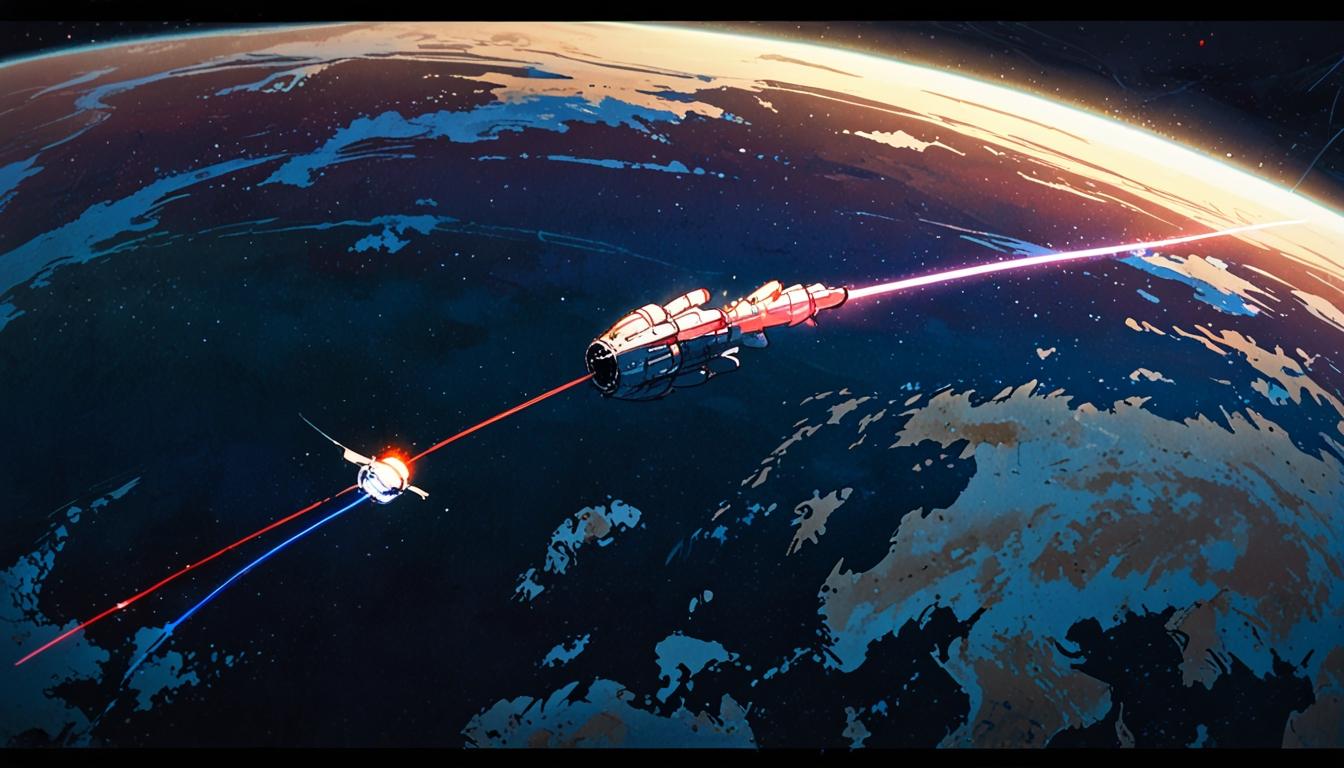Out-of-Control Soviet Spacecraft Set to Reenter Earth’s Atmosphere
An unusual scenario is unfolding as scientists prepare for the impending reentry of Cosmos-482, a Soviet Venus lander that has been in orbit around Earth since 1972. According to the European Space Agency (ESA), the craft is expected to reenter the atmosphere on Sunday, May 10, at approximately 08:12 UK time. As the reentry window approaches, predictions from ESA’s Space Debris Office indicate a possible impact zone that encompasses vast stretches of the globe, particularly between 52° north and 52° south latitudes. This zone includes parts of England and Wales, heightening awareness among residents, although the chances of impact are deemed slim.
The spacecraft, initially launched on March 31, 1972, was intended to land on Venus but never escaped Earth’s gravity. The robust design of the spacecraft, built to endure the harsh atmospheric conditions of Venus, raises concerns that some portions—most notably the titanium descent capsule—may survive the descent intact. While ESA is closely monitoring its trajectory, most forecasts suggest that it is more likely to land in the ocean than on land.
Jonathan McDowell, an astronomer with the Harvard-Smithsonian Center for Astrophysics, addressed the situation with a balanced perspective, stating, “It is alarming but not end-of-the-world alarming. It’s like a medium-sized car falling out of the sky.” He went on to reassure the public that, given the Earth's predominantly oceanic surface and the sparsely populated regions within the predicted reentry zone, the probability of the spacecraft striking a populated area is exceedingly low. Despite this, McDowell warned that while getting hit by a piece of spacecraft would not be ideal, there was "no need for major concern."
Previous incidents with space debris underscore the unpredictable nature of uncontrolled reentries. For instance, a retired NASA satellite recently reentered the atmosphere with concerns that fragments could pose risks to populated areas. Such circumstances highlight the need for comprehensive tracking and safety protocols as space debris continues to accumulate in orbit due to decades of orbital activities. The situation surrounding Cosmos-482 serves to reaffirm the importance of ongoing monitoring and public safety measures during such events.
While the Cosmos-482 spacecraft marks another chapter in the narrative of space exploration and subsequent debris management, it also accentuates growing discussions within the scientific community regarding the policy and legal frameworks needed to address the hazards associated with falling space debris. As space activity expands, so too do the potential risks linked to decommissioned satellites and spacecraft.
In the digital realm, various expert analyses and simulations offer insights into the trajectory and expected behaviour of such reentry events. Websites dedicated to space monitoring provide essential data and updates, reassuring the public that authorities are tracking the spacecraft’s descent closely.
In conclusion, as the world anticipates the reentry of Cosmos-482, scientists continue their careful monitoring, emphasising public safety while delivering information on the situation’s evolving nature. Though the chances of a direct impact may be low, the spacecraft serves as a poignant reminder of humanity's complex relationship with space exploration and the responsibilities that come with it.
Reference Map:
- Paragraph 1 – [1], [5]
- Paragraph 2 – [1], [6]
- Paragraph 3 – [2], [4]
- Paragraph 4 – [3], [5]
- Paragraph 5 – [6], [7]
Source: Noah Wire Services
